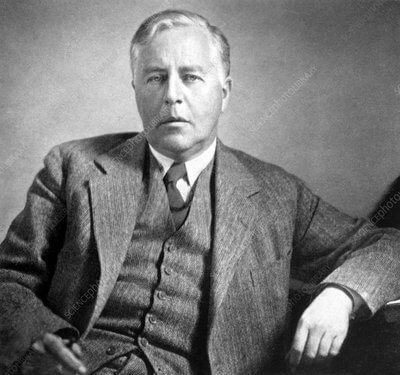Who was James Hopwood Jeans? Information British mathematician James Hopwood Jeans biography, life story, works, contribution to science.

James Hopwood Jeans
James Hopwood Jeans;(1877-1946), British mathematician, who elucidated problems in theoretical physics, astronomy, and cosmogony. He was born at Southport, England, on Sept. 11, 1877, and was educated at Cambridge, where he was graduated in 1898. Appointed a university lecturer in 1904, he resigned the following year to become professor of applied mathematics at Princeton University. During these years he wrote three textbooks: The Dynamical Theory of Gases (1904), Theoretical Mechanics (1906), and The Mathematical Theory of Electricity and Magnetism (1908). From 1910 to 1912 he was Stokes lecturer at Cambridge, but apart from a largely honorary chair at the Boyal Institution, he held no subsequent teaching position. He died at Dorking, England, on Sept. 16, 1946.
Jeans prepared a Report on Radiation and the Quantum Theory (1914) and made valuable contributions to statistical mechanics, including the kinetic theory of gases and the problem of energy partition in an enclosure (the Bayleigh-Jeans law); he followed up this line of research in Atomicity and Quanta (1926). Perhaps his greatest contribution to science was Problems of Cosmogony and Stellar Dynamics (1919), in which he extended the researches of Colin Maclaurin, Karl Jacobi, Henri Poincare, and George H. Darwin on the evolution of the possible configurations of an incompressible rotating fluid; specifically, he confirmed that the pear-shaped figure—which Poincare and Darwin had found such a fluid would take on—was unstable.
He applied these results to problems of the evolution of celestial bodies, proving that Laplace’s nebular hypothesis was untenable. He also obtained important results concerning the origin of binary star systems, and motions of and in star clusters. Much of this research was amplified in Astronomy and Cosmogony (1928).
After 1928, Jeans turned his talents entirely to the popularization of science and philosophy, with considerable success. Among his popular works are The Universe Around Us (1929), Eos or the Wider Aspects of Cosmogony (1930), The Mysterious Universe (1930), The Stars in Their Courses (1931), The New Background of Science (1933), Through Space and Time (1934), Science and Music (1938), and Physics and Philosophy (1942). Jeans was knighted in 1928 and awarded the Order of Merit in 1939.
James Hopwood Jeans Contribution to science
James Hopwood Jeans was a prominent British physicist and mathematician who made significant contributions to science in the early 20th century. His major contributions include:
- Stellar structure: Jeans conducted research on the physical properties of stars, specifically on the relationship between the mass, radius, and temperature of stars. He proposed a theory of gravitational instability in gas clouds, which was instrumental in explaining the formation of stars.
- Cosmology: Jeans was one of the pioneers of modern cosmology, and he made significant contributions to the understanding of the origin and evolution of the universe. He was a strong advocate for the Big Bang theory, and he made calculations that helped to establish the age of the universe.
- Quantum mechanics: Jeans was one of the early proponents of quantum mechanics, and he made important contributions to the understanding of the behavior of electrons in atoms. He introduced the concept of the “critical density” of electrons, which is a fundamental concept in the study of materials.
- Popular science: In addition to his contributions to theoretical physics and mathematics, Jeans was also a popular science writer who made science accessible to the general public. He wrote several popular science books, including “The Mysterious Universe” and “The Growth of Physical Science.”
Overall, James Hopwood Jeans was a brilliant scientist who made important contributions to the fields of astronomy, cosmology, quantum mechanics, and popular science. His work helped to lay the foundation for many of the scientific advances of the 20th century.